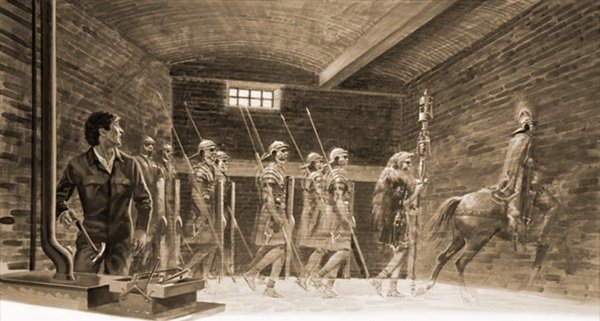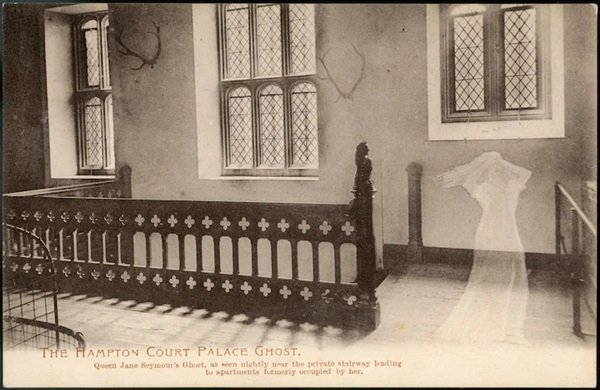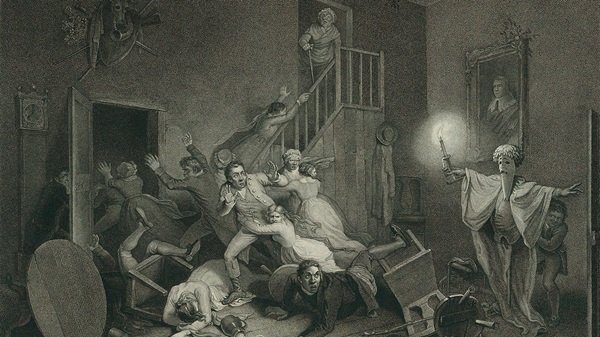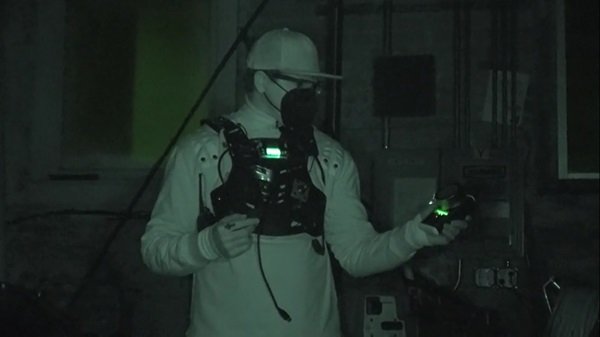Whispers Through Time: Britain’s Historical Ghosts and Why They Linger
Ghosts. The mere mention of these spectral beings can send a shiver down the spine or spark a lively debate among enthusiasts of the paranormal. In the United Kingdom, tales of ghostly encounters are as old as the hills, or more accurately, as old as the historical periods that seem to dominate these eerie narratives.
Roman Residues: Spirits of Britannia’s Ancient Invaders
Step into the misty realms of ancient Britain, and you might encounter a legionnaire’s ghost patrolling a lonely stretch of Hadrian’s Wall. The Roman occupation, which spanned from AD 43 to around AD 410, left an indelible mark on the landscape and in the lore of the British Isles. Stories abound of spectral soldiers marching through the night, their ghostly forms a reminder of a bygone era when Britannia was a distant outpost of the Roman Empire.
Historians and ghost hunters alike have pondered why Roman ghosts seem to linger more prominently in British ghostlore compared to other ancient civilizations. Perhaps it’s the tangible remains of Roman forts and villas scattered across the countryside, their ancient stones whispering tales of conquest and intrigue. Or maybe it’s the enduring fascination with Roman discipline and military prowess that keeps their spirits tethered to this earthly realm.
Take, for instance, the haunting tale of the Roman soldiers at York. The well-known story goes that a workman witnessed a group of Roman legionaries marching through the cellars of the Treasurer’s House, their legs disappearing into the floor due to changes in ground level over the centuries.

Tudor and Stuart Spectres: Phantoms of Monarchs and Martyrs
Fast forward to the Tudor and Stuart periods, and you’ll find a tapestry of ghostly apparitions woven into the fabric of British history. From the ghostly figure of Anne Boleyn, whose tragic fate at the hands of Henry VIII continues to haunt the Tower of London, to the spectral presence of Charles I, whose execution during the English Civil War left an indelible mark on the nation’s psyche, these periods are rich with stories of royal intrigue, political upheaval, and religious persecution.
The Tudor era, with its dramatic dynastic struggles and religious turmoil, provides fertile ground for ghost stories. It was a time when loyalty could mean life or death, and betrayal could echo through the ages in the form of restless spirits seeking justice or peace.
One can’t help but wonder, what would it be like to encounter the ghost of Catherine Howard, Henry VIII’s fifth wife, reportedly seen running through Hampton Court Palace, screaming for mercy?

Victorian Voyages into the Beyond: Spiritualism and Supernaturalism
Enter the Victorian era, a period of scientific advancement, industrial revolution, and, paradoxically, a renewed interest in the supernatural. The Victorians, with their insatiable curiosity and penchant for exploration, turned their attention to the realms beyond the physical world. Spiritualism, séances, and mediums captured the public imagination, offering glimpses into a realm where the living could communicate with the dead.
Haunted mansions, eerie graveyards, and misty moors provided atmospheric settings for Victorian ghost stories. Authors like Charles Dickens and M.R. James spun chilling tales of spectral visitations and otherworldly encounters, tapping into the Victorian fascination with the afterlife and the unknown.

Education and Cultural Influence
The prevalence of ghost stories from specific historical periods in the UK also raises questions about the influence of education and cultural narratives. In British schools, history curricula often highlight periods like the Roman, Tudor, Stuart, and Victorian eras. These educational focuses not only provide a backdrop for understanding the past but also shape how historical figures and events are remembered and mythologized in popular culture, including ghost stories.
The stories we tell about ghosts are not just tales of spooky encounters; they’re reflections of our cultural heritage, our fears and fascinations, and our quest for meaning in the mysteries that surround us.
Why No Ghosts of Cavemen and Dinosaurs?
One intriguing question that often arises in discussions about ghosts is why sightings or stories of ancient beings like cavemen or dinosaurs are notably absent. While this may simply reflect a lack of cultural narratives or historical documentation from such ancient times, it also raises intriguing possibilities about the nature of ghosts and their alleged manifestations.
Cultural Consciousness and Historical Prominence
Unlike the Romans, Tudors, Stuarts, and Victorians, who occupy prominent places in our historical consciousness, cavemen and dinosaurs are more specialized subjects of study. They are not typically at the forefront of our knowledge of history, taught in schools, or depicted in popular literature and media in the same way. As a result, the absence of ghostly tales from these ancient times may reflect their relative obscurity in our cultural imagination.
Interpreting Ghostly Manifestations
Ghosts, as they are commonly understood, seem to manifest in ways that align with our understanding of history and cultural narratives. The ghosts of Romans marching through ancient forts, Tudor monarchs haunting medieval castles, or Victorian spirits lingering in grand estates resonate more strongly because these periods are ingrained in our cultural memory and educational curriculum.
This phenomenon highlights how our perceptions of the supernatural are shaped by what we know and how we interpret history. As we explore the mysteries of ghostly phenomena across different eras, we are also exploring the depths of our own cultural consciousness and the enduring fascination with the unknown.
Modern Ghost Hunting: Technology Meets Tradition
In recent years, the pursuit of ghostly encounters has taken on a decidedly modern twist. Ghost hunting teams armed with EMF meters, infrared cameras, and EVP recorders scour supposedly haunted locations in search of evidence of the paranormal. TV shows like “Most Haunted” and “Ghost Adventures” have popularised these techniques, bringing ghost hunting into the mainstream.
But does all this technology actually bring us closer to understanding the nature of ghosts? Or are we simply finding new ways to interpret the unexplained? It’s a question that continues to divide opinion among paranormal enthusiasts and sceptics alike.

A Global Perspective: British Ghosts in Context
While British ghost stories have their own unique flavour, it’s worth noting that ghostly tales are a universal phenomenon. From the vengeful yurei of Japan to the mischievous duendes of Latin America, cultures around the world have their own rich traditions of spectral encounters.
What sets British ghost stories apart, perhaps, is their deep intertwining with the nation’s history. The ghosts of Britain seem to serve as a kind of supernatural history lesson, keeping the past alive in the public imagination.
Consider, for instance, the difference between a British haunted castle and an American haunted house. While both might be scary, the castle ghost often comes with centuries of historical baggage, embodying not just personal tragedy but national events and societal changes.
Conclusion: The Enduring Appeal of British Ghosts
In exploring the enigma of ghosts across Britain’s eras, we delve not only into the shadows of history but also into the depths of our own imaginations and beliefs. As we navigate the labyrinthine corridors of history, we encounter echoes of the past that refuse to be silenced. Whether it’s the clank of Roman armour echoing across a mist-shrouded field, the whispered prayers of a condemned Tudor noble echoing through the halls of a haunted manor, or the flickering candlelight of a Victorian séance illuminating the faces of the departed, these stories remind us that the past is never truly gone.
The enduring legacy of these ghostly tales in contemporary British culture reflects our ongoing fascination with the supernatural and our desire to connect with the mysteries of the past. As we continue to tell and retell these spectral stories, we keep alive not just the ghosts themselves, but the history they represent.
So, the next time you find yourself in an ancient British ruin or a grand old manor house, take a moment to listen. In the whisper of the wind or the creak of an old floorboard, you might just hear the echoes of history and perhaps, if you’re lucky (or unlucky), encounter a ghost or two along the way.
What do you think? Are ghosts real, or are they simply the product of our collective imagination? And if they are real, why do you think certain historical periods seem to produce more ghostly activity than others? The debate continues, and the mystery endures, just like the ghosts themselves.
Has this article inspired you to visit a paranormal location? Plan and book your visit here.









